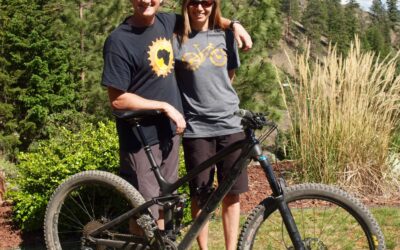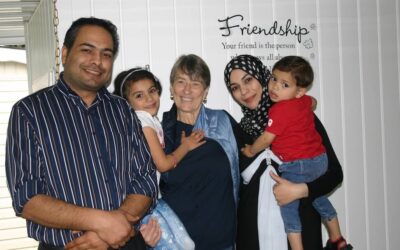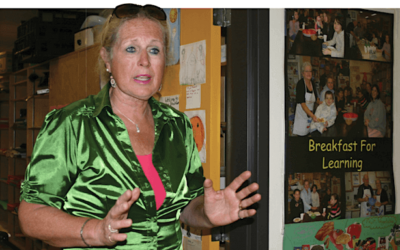 What comes to mind when you hear “Salvation Army”—thrift stores? Christmas kettles? While Major Ron Cartmell was growing up, it was simply the church his family had attended for three generations. “I didn’t even understand the wider concept of what the Salvation Army does in the community,” he says: food banks… and teaching kitchens, homeless shelters, support programs for single moms or struggling families, emergency support for first responders in times of community crisis. “One of the real gifts of the Salvation Army is to be able to survey the landscape, see what needs there are, and then step forward and meet those needs.”
What comes to mind when you hear “Salvation Army”—thrift stores? Christmas kettles? While Major Ron Cartmell was growing up, it was simply the church his family had attended for three generations. “I didn’t even understand the wider concept of what the Salvation Army does in the community,” he says: food banks… and teaching kitchens, homeless shelters, support programs for single moms or struggling families, emergency support for first responders in times of community crisis. “One of the real gifts of the Salvation Army is to be able to survey the landscape, see what needs there are, and then step forward and meet those needs.”
The Salvation Army has always taken a practical approach to addressing need. In England during the late 1800s, young children and widows were employed for starvation wages in match factories where exposure to white phosphorus often led to a condition dubbed “phossy jaw”; their jawbones rotted from the inside out. Factory owners were aware that red phosphorus was a safe alternative, but weren’t prepared to spend money converting their equipment. Not content with lobbying MPs to legislate change, the Salvation Army purchased a match factory, converted the equipment, doubled their employees’ wages, and cajoled retailers into selling only red-phosphorus matches.
That pragmatism lives on in their motto soup, soap and salvation. Real community transformation has to start by addressing immediate problems. This often means, quite literally, sharing a bowl of warm soup. The Kelowna Salvation Army also offers Breakthrough, a program for single moms, and Breakout, a homework and supper club to help children at a vulnerable age develop critical thinking skills. To help families re-shape themselves when a member is in treatment for addiction, they’re introducing an empowerment program modelled on a successful one developed in Wollongong, Australia. “They’ve invited us to be their first international site,” says Ron.
To make sure all resources are well spent, every project proposal undergoes a thorough needs assessment; existing programs are continually re-evaluated. To help with this, Ron says they’ve established a community council with representatives from law enforcement, the justice system and the business community. Salvation Army staff also participates in the regular meetings of service providers so that everyone’s on the same page and there’s no unnecessary duplication of service.
Instead of hosting new programs, the Salvation Army may add their support to someone else’s—like providing meal services at Inn from the Cold. “It’s not about how we can look good. It’s really about how do we best help the people that, together, we’re serving,” says Ron. “When other people come alongside and say, ‘Oh, yes, this is a big need,’ we can draw back because the need is now taken care of. And we can look again and mobilize fill to another gap.”
Often those gaps are where people are in transition—dealing with a major blow (or a long series of setbacks), struggling to get their lives on track. Sometimes all they really need is someone to talk things over with; other times, they need practical assistance.
Staff and volunteers help find solutions to short-term problems, like temporarily accessing food banks so grocery money can be used to repair the breadwinner’s work vehicle. They can also help people deal with some of the underlying problems that contribute to long-term poverty. Some low-income families aren’t accessing existing support like the federal child tax benefit because they are too afraid of potential penalties to file their overdue tax returns. With support from the volunteer tax team, they find the courage. “Oftentimes, they don’t even have to pay anything,” says Ron, and when the benefit cheques start coming in “it makes a huge difference.”
Few of us are comfortable sharing our biggest problems. Vulnerable people often find it doubly difficult to trust, so plenty of small talk—and soup—gets shared before they’re ready to open up about deeper issues. And it’s still at this very basic relationship-building level that the Salvation Army does its most effective work. While less obvious than a match industry makeover, those relationships are still transforming the community one life at a time.
Want to help the Salvation Army help your community? Why not get co-workers, friends or neighbours and sponsor a kettle. Last year a Scotia Bank team worked three kettles for a day and brought in $19,000; under a matching program, their branch tossed in another $15,000. The Salvation Army is proud that 86 cents of every dollar is used to sustain life changing programs.




0 Comments